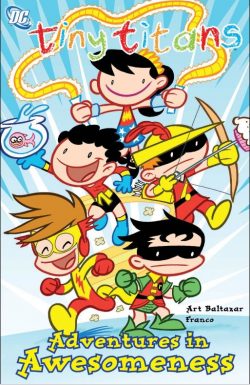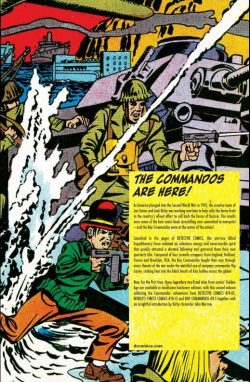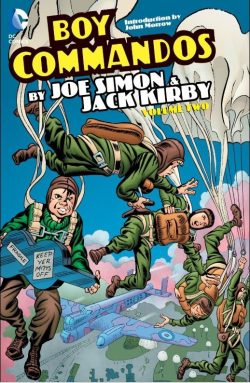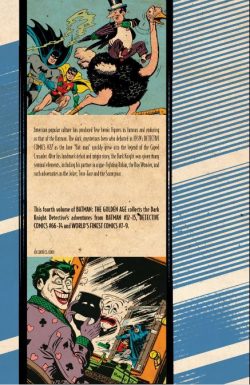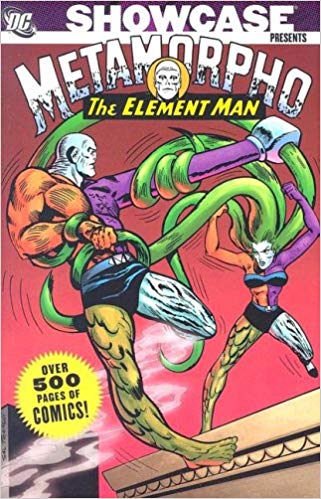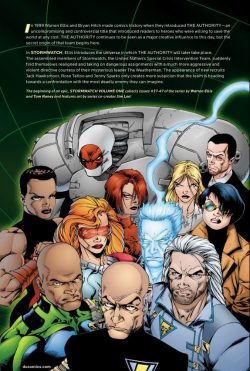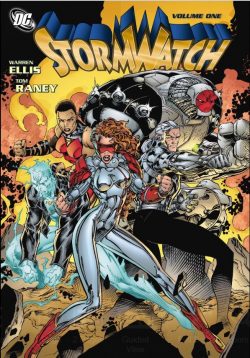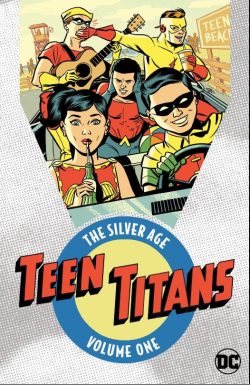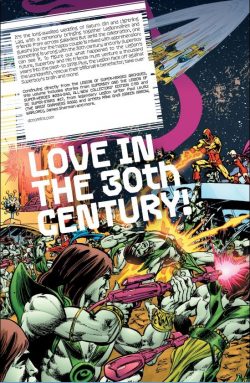

By Paul Levitz, Gerry Conway, Paul Kupperberg, Jack C. Harris, Mike Grell, James Sherman, Jim Starlin, Ric Estrada, Howard Chaykin, George Tuska, Walt Simonson, Mike Nasser, Juan Ortiz & various (DC Comics)
ISBN: 978-1-4012-7291-3 (HB)
Once upon a time, a thousand years from now, a band of super-powered kids from a multitude of worlds took inspiration from the greatest legend of all time and formed a club of heroes. One day those Children of Tomorrow came back in time and invited their inspiration to join them…
Thus, began the vast and epic saga of the Legion of Super-Heroes, as first envisioned by writer Otto Binder & artist Al Plastino when the many-handed mob of juvenile universe-savers debuted in Adventure Comics #247 (April 1958), just as the revived superhero genre was gathering an inexorable head of steam in America. Happy 60th Anniversary, Futurians!
Since that time the fortunes and popularity of the Legion have perpetually waxed and waned, with their future history continually tweaked and overwritten, retconned and rebooted time and time again to comply with editorial diktat and popular fashion.
This cosmically-captivating compendium (available in sturdy hardback and digital editions) gathers a chronological parade of futuristic delights from Superboy and The Legion of Super-Heroes #234-240, covering December 1977 to June 1978, as well as an untold tale of their earliest exploits from DC Super-Stars #17 as well as a major event from tabloid colossus All-New Collector’s Edition C-55.
This was a period when the recently impoverished superhero genre had again flared into vibrant new life to gain its current, seemingly unassailable ascendancy.
That prior plunge in costumed character popularity had seen the team lose their long-held lead spot in Adventure Comics, get relegated to a back-up slot in Action Comics and even vanish completely for a time. Legion fans however are the most passionate of an already fanatical breed…
No sooner had the LSH faded than fan agitation to revive them began. After a few tentative forays as an alternating back-up feature in Superboy, the game-changing artwork of Dave Cockrum inspired a fresh influx of fans and the back-up soon took over the book – exactly as they had done in the 1960s when the Tomorrow Teens took Adventure from the Boy of Steel and made it uniquely their own…
Without warning or preamble, the adventure resumes with Jack C. Harris, Juan Ortiz & Bob Smith exploring ‘The Secret of the Quintile Crystal’ (from DC Super-Stars #17, December 1977) as founders Saturn Girl, Lightning Lad and Cosmic Boy relate to Superboy how a theft by diplomats beyond the reach of the law catapulted the kids – and their unique problem-solving gifts – to the forefront of United Planets security planning…
Superboy and The Legion of Super-Heroes #234 then details a contemporary cosmic catastrophe as a clash with a space dragon mutates a squad of heroes into a marauding amalgamated menace. When the call goes out ‘Wanted Dead or Alive: The Composite Legionnaire’ (by Gerry Conway, Ric Estrada & Jack Abel) ultimate mercenary Bounty goes after the victim and he’ won’t let sentiment of the remaining heroes interfere with ‘The Final Hunt!’…
Happily, Superboy and energy-being Wildfire have enough power to stop the hunter and cure their companions…
Issue #235 features the kind of story uber-dedicated fans adore. ‘The Legion’s Super-Secret’ – by Paul Levitz, Mike Grell & Vince Colletta) gives a glimpse into the covert mental condition Superboy endures every time he returns to his own era. When the process is abruptly interrupted because of a raid by resource hungry Sklarians, the Legionnaires fear the greatest hero of all time may betray the 39th century’s most dangerous biological deception.
Although a tense and rousing escapade, the sad truth is that this tale was conceived to placate sections of the audience who kept carping on about why clearly fully mature characters were still being designated “Boyâ€, “Girlâ€, “Kidâ€, “Lass†and “Ladâ€. As if comics never had serious social problems and issues to address, right?
The lead story is far-surpassed by potent back-up ‘Trial of the Legion Five’ (Conway, George Tuska & Colletta) wherein some of the heroes are accused of causing the death of a citizen caught in the rampage of the Composite Legionnaire. Their accuser is an old political adversary bearing a grudge and as ever, things are not what they seem…
S&LSH #236 was a power-packed portmanteau offering and brimming with vibrant new artistic talent. It begins with ‘A World Born Anew’ (written by Levitz & Paul Kupperberg with stunning art from neophytes James Sherman & Bob McLeod). When fantastically powerful alien property speculator Worldsmith starts arbitrarily terraforming the planet Braal, even a full team of heroes is unable to stop him until Princess Projectra deduces a better way to send the crazed capitalist packing.
Levitz, Mike Nasser, Joe Rubinstein & Rick Bryant then provide an all-action prologue to greater sagas ahead as ‘Mon-El’s One-Man War’ finds the formidable Daxamite exerting all his energies to save an experimental star mine during a bloody incursion by the war-crazed Khunds before the moment Legion fans had awaited for decades finally came…
‘Words Never Spoken’ by Levitz, Sherman & Rubinstein at long last saw Lightning Lad and Saturn Girl set the day…
No longer bound by responsibility, they had agreed to quit the team – because teammates weren’t allowed to marry – resulting in a huge tabloid sized publishing milestone released as All-New Collector’s Edition C-55 (March 1978).
Comicbook weddings never start well and ‘The Millennium Massacre’ (by Levitz, Grell & Colletta) coincided with a dastardly plot to rewrite history by their greatest foe. As the young marrieds stumble into a honeymoon ‘Murder by Moonlight’, Superboy and a select team voyage to 1988. They’re hoping to prevent the destruction of the United Nations and solve ‘The Twisted History Mystery’ before their comrades and the newlyweds perish in an interplanetary war but the real showdown only occurs after a ‘Showdown at the End of Eternity’…
Accompanied by a potted visual history of ‘Superboy and the Legion of Super-Heroes’ from Gell & Colletta and fact-features ‘The Origins and Powers of the Legionnaires’ and Secrets of the Legion’ by Levitz, Sherman & Abel this epic event set the scene for a darker, more compelling tone…
That began with #237’s ‘No Price Too High’ (Levitz, Walt Simonson & Abel) wherein the team’s financial backer R. J. Brande is abducted by maniac Arma Getten who demands the team bring him ‘The Heart of a Star’, ‘The Stolen Trophy’ and life-sustaining artefact ‘The Crown of the Graxls’ in return for their friend’s life…
Well aware these objects hold the power ‘To Shake the Stars’ the team comply. Apparently…
Due to deadline problems #238 was a hasty reprint of Adventure Comics #359 & 360 and is represented here by its spiffy new Jim Starlin wraparound cover, but the intended tale when it finally emerged was an instant classic.
Plotted and laid out by Starlin, with Levitz script and Rubinstein finishes, #239’s ‘Murder Most Foul’ saw rowdy, rebellious Ultra Boy framed for murdering a prostitute and on the run from his former comrades. Only LSH Espionage Squad leader Chameleon Boy saw something behind the seemingly open-&-shut case, and his off-the-books investigation indicated there was indeed a Legion traitor: potentially the most dangerous opponent of all…
The final inclusion in this mammoth compilation is #240 which offered a brace of thrillers. Levitz, Harris, Howard Chaykin & Bob Wiacek opened with ‘The Man Who Manacled the Legion’ as old foe Grimbor the Chainsman kidnapped the UP President in a bizarre plot to kill the heroes he held responsible for the death of his true love. The book does end on a tantalising high however as Levitz, Kupperberg, Sherman & McLeod take us into the Legion Training Academy to introduce a bevy of new heroes eager to join the big guns. Super dense Jed Rikane (yes, I know, just go with it), invulnerable Laurel Kent and Shadow Lad (Shadow Lass‘ younger brother) all show potential and flaws in equal amounts but the mutant tracker mercenary is who really troubles Wildfire. ‘Dawnstar Rising’ shows not only her immense ability but a disregard for her comrades that could have lethal consequences in the days to come, unless the Legion somehow works its inclusive magic on her…
Rounding out the future fun, ‘Notes from Behind the Scenes’ provides glimpses at Levitz’s original presentation for tabloid edition, plots for a Queen Projectra tale and data cheat sheets for Saturn Girl and others.
The Legion is unquestionably one of the most beloved and bewildering creations in comics history and largely responsible for the growth of the groundswell movement that became American Comics Fandom. Moreover, these scintillating and seductively addictive stories – as much as Julie Schwartz’s Justice League of America or Jack Kirby’s Fantastic Four – fuelled the interest and imaginations of generations of readers to create the industry we all know today.
If you love comics and haven’t read this stuff, you are the poorer for it and need to feed your dreams of a better tomorrow as soon as possible.
© 1977, 1978, 2017 DC Comics. All Rights Reserved.




